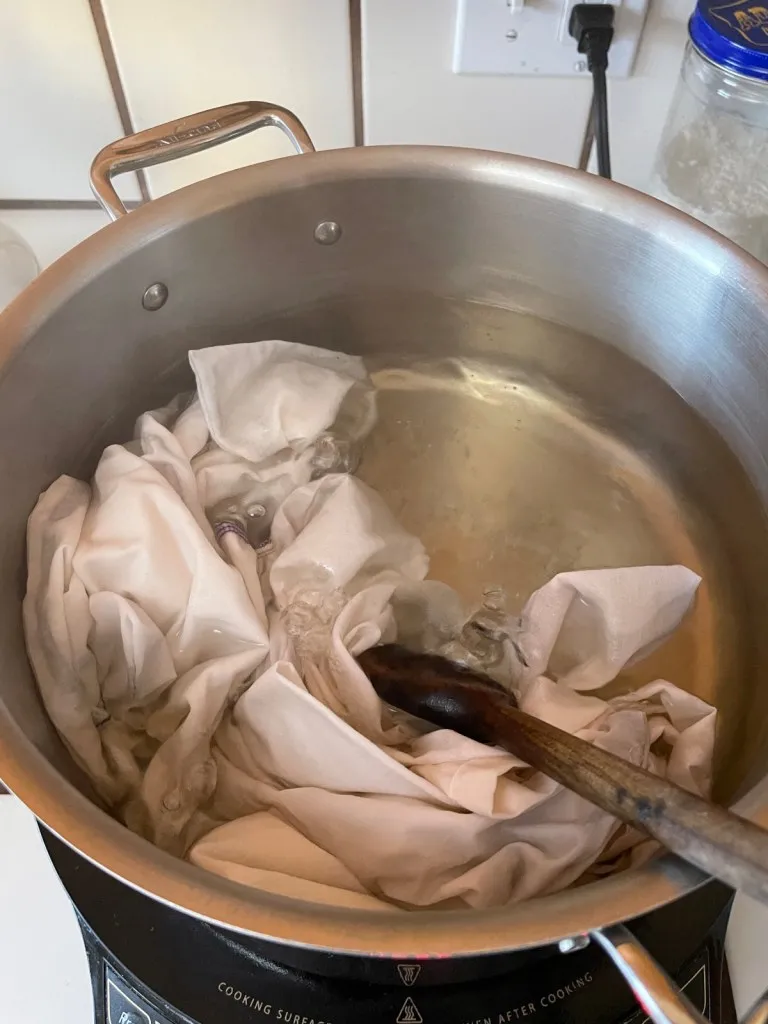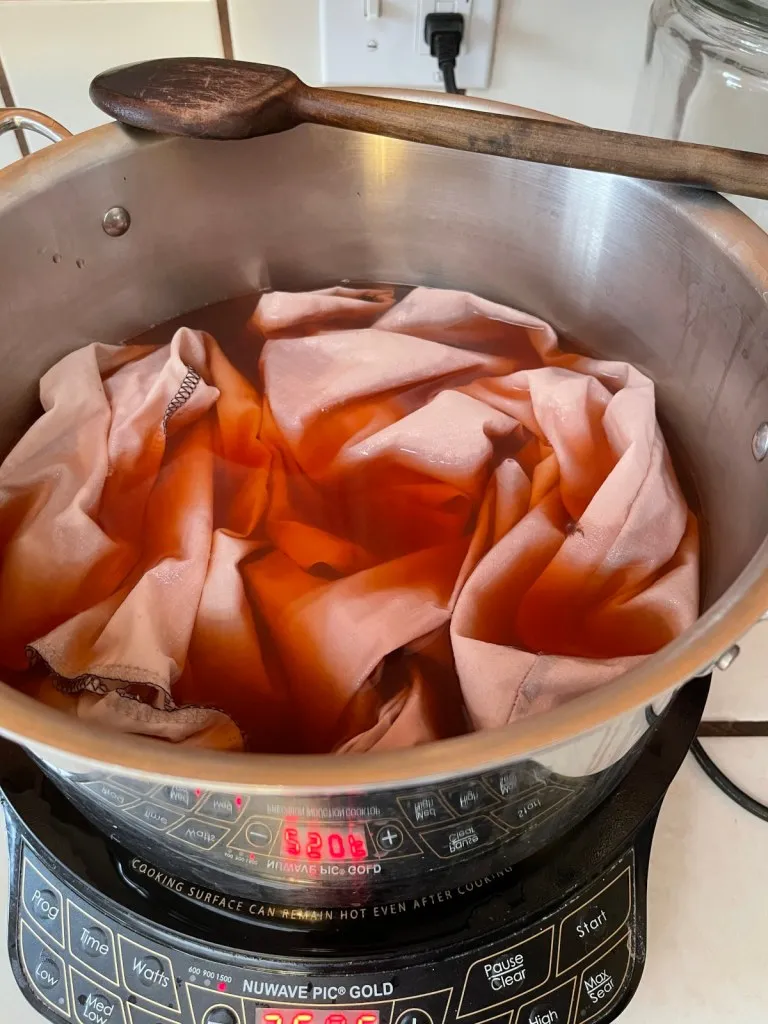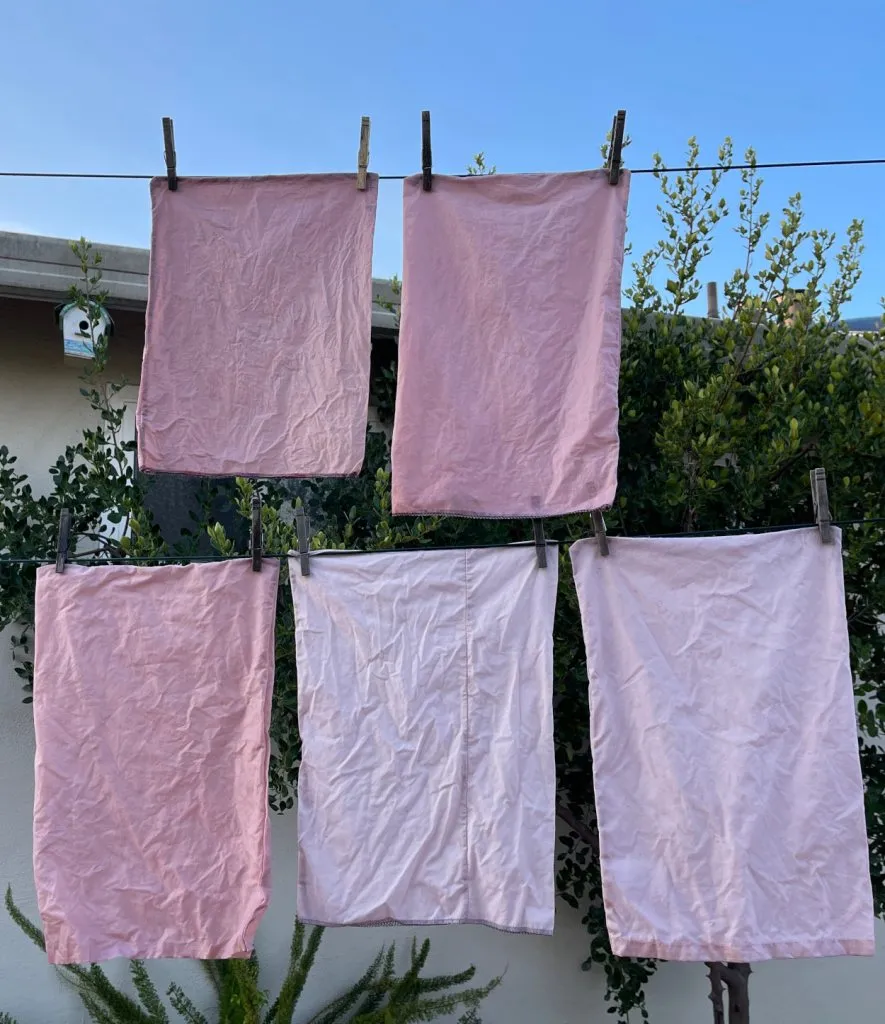Blog
Crafting with Nature: How to Make Beautiful Fabric Dye from Avocado Pits

Hey there, fellow art enthusiasts! Robert Kline here, and I’m thrilled to share a fun and eco-friendly crafting adventure with you. Did you know those avocado pits you usually toss can be transformed into beautiful, natural fabric dye? It’s true! I recently used this technique to add a touch of color to some plain cotton produce bags, and the results were fantastic. Let’s dive into the process!
Gather Your Supplies
Every artist needs their tools, and for this project, you’ll need a few simple things:
- 5 cotton produce bags (or any fabric you want to dye!)
- A large stockpot
- A metal spoon
- Clothesline or drying rack
- A large bowl
- ½ teaspoon mild dish detergent
- 6 avocado pits (Remember, we’re all about that zero-waste life!)
- Water
Day 1: Preparing the Fabric and Dye
This project spans two days, giving the dye plenty of time to work its magic.
Step 1: Wash and Prepare the Fabric
- Fill your stockpot with enough water to allow your produce bags to float freely.
- Add ½ teaspoon of mild dish detergent to the water.
- Bring the water to a simmer and add the produce bags.
- Stir continuously for the first two minutes, then every 10 minutes for an hour.
- You’ll notice the water turning slightly yellow – that’s a good sign! This process preps the fabric for dyeing.
- After an hour, remove the bags, gently wring out excess water, and hang them to dry.
Step 2: Create the Avocado Pit Dye
- While your fabric dries, let’s get that natural dye going!
- In the same pot (no need to wash it), add your 6 avocado pits and enough water to cover them.
- Bring the water to a simmer and let the pits work their magic for an hour.
- Turn off the heat, cover the pot, and let it sit overnight. The color will deepen as it rests.
 White reusable cloth produce bags simmer in a pot of water. A wooden spoon stirs them around.
White reusable cloth produce bags simmer in a pot of water. A wooden spoon stirs them around.
Prepping the fabric with a gentle simmer.
Day 2: Dyeing the Fabric
Now comes the fun part – transforming those plain bags into unique, naturally dyed creations.
Step 1: Soak the Fabric
- Soak your dried produce bags in a large bowl of water while you prepare the dye bath.
Step 2: Strain and Heat the Dye
- Remove the avocado pits from the pot (hello, compost bin!) and discard any loose skin.
- Bring the dye back to a boil on your stovetop.
Step 3: Dye the Fabric
- Wring the excess water from your soaked produce bags.
- Carefully immerse the bags in the boiling dye bath.
- Stir continuously for the first two minutes, then every 10 minutes for an hour.
 Reusable cloth produce bags sit in a large silver pot filled with avocado pit dye. The pot sits on and induction cooktop.
Reusable cloth produce bags sit in a large silver pot filled with avocado pit dye. The pot sits on and induction cooktop.
The fabric takes a dip in the natural dye bath.
Step 4: Rinse and Dry
- After an hour, remove the bags from the dye bath and rinse them in the bowl of water you used earlier.
- Gently wring out excess water and hang your beautifully dyed produce bags to dry!
 Five reusable cloth produce bags in varying shades of pink dry on a clothes line outside
Five reusable cloth produce bags in varying shades of pink dry on a clothes line outside
The finished product: beautifully dyed produce bags ready for action.
Tips and Tricks from Robert Kline Art
- Experiment with Color: Want a deeper shade of pink? Simmer the dye for longer or use more avocado pits.
- Other Natural Dyes: This method also works wonders with onion skins, creating beautiful earthy tones. Let those creative juices flow!
- Storage: If you have leftover dye, store it in the refrigerator for up to a week. Remember, it’s made from natural ingredients, so it won’t last forever!
Conclusion
There you have it – a simple and rewarding way to transform kitchen “waste” into beautiful, natural fabric dye. It’s a testament to the creativity that blossoms when we embrace sustainability and explore the hidden potential of everyday items.
Give this technique a try and share your colorful creations with me on social media! And remember, the Robert Kline Art website is your destination for inspiring craft ideas, tips, and unique handmade gifts for every occasion. Let’s keep those creative sparks flying!
